Artist Interviews 2021
Julian Voss-Andreae 
By Johnny Otto
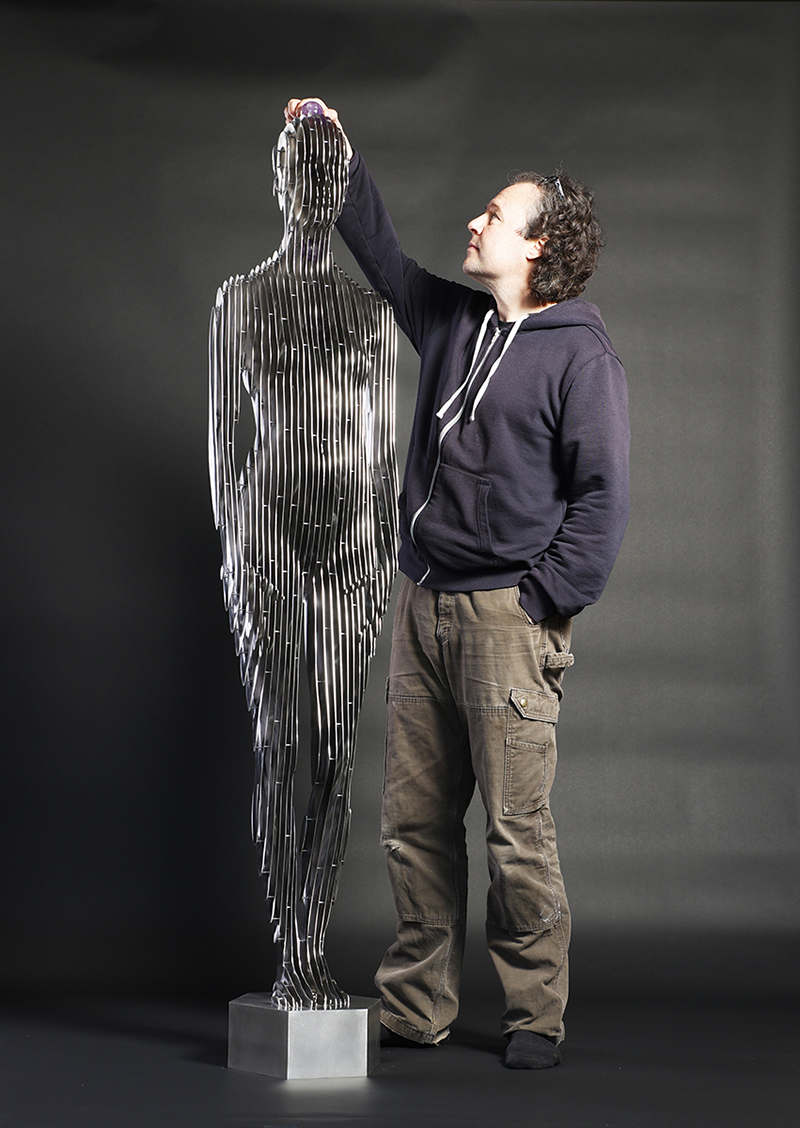
Before you became a Sculptor, you studied quantum physics in Berlin, Edinburgh and Vienna. Then you moved to Oregon to begin your life as an Artist.
Your early sculptures actually resembled particles and proteins. Then in 2006 you created your first "disappearing" sculpture. Is that correct?
Can you lead us through the transition from being a student of physics to being an Artist and how do they complement one another and/or inspire one another?
Yes, that is true. The only thing is that when I moved to Oregon, I re-started my life as an artist: Before going into physics, I was very much into painting, drawing and printmaking and I had actually already decided for myself to become an artist at that early time in my life – but I had no clue, how or when. But I definitely embarked on being a full-time artist as a career choice after I moved to the US, involving the hope to eventually making a living in this line of work.
The reason I had initially gone into physics was really because the things I had read about quantum physics in popular science books seemed totally crazy in that they flew in the face of everything I took for granted; basically what we call the paradigm of classical physics, characterized by features such as determinism, causality, and realism (as in: Reality is something ‘out there’, independent of us).
That quest for understanding what nature tells us when we do quantum physics and how that relates to our human experience, led me to do my graduate research in Anton Zeilinger’s group in Vienna, a well-known research group focusing on fundamental questions of quantum physics driven primarily by a philosophical interest. We set out to show that even fairly large pieces of matter still behave as quantum mechanical waves and we used Carbon-60 molecules, the famous ‘buckyballs’, to do that. After this experiment was a success (see https://julianvossandreae.com/wp-content/uploads/1999/12/c60article.pdf), I started looking into other, even larger candidates for such experiments – the dream goal was to eventually be the quantum object yourself, getting sent as a wave and being detected again as a particle – how would that feel like?
That idea to think of myself as a quantum object, led in 2006 to the first “disappearing” sculpture, a stylized walking figure titled “Quantum Man”, consisting of parallel slices with gaps in between, arranged like the wave fronts in the quantum mechanical wavefunction that would describe that object.
But since it is not possible to send a person through the experiment, the next babystep in our physics research was to expand from the buckyballs to using biomolecules – and my research into those was what got me interested in the beauty of protein structure and later led to my first body of 3-D works, the ‘protein sculptures’.
My whole approach to do art is very much inspired by how we do science: I explore a field very consciously, I subdivide problems into simpler step that are solvable, I always search for new technologies and angles and I connect with people to overcome the obstacles in realizing my vision, one by one.
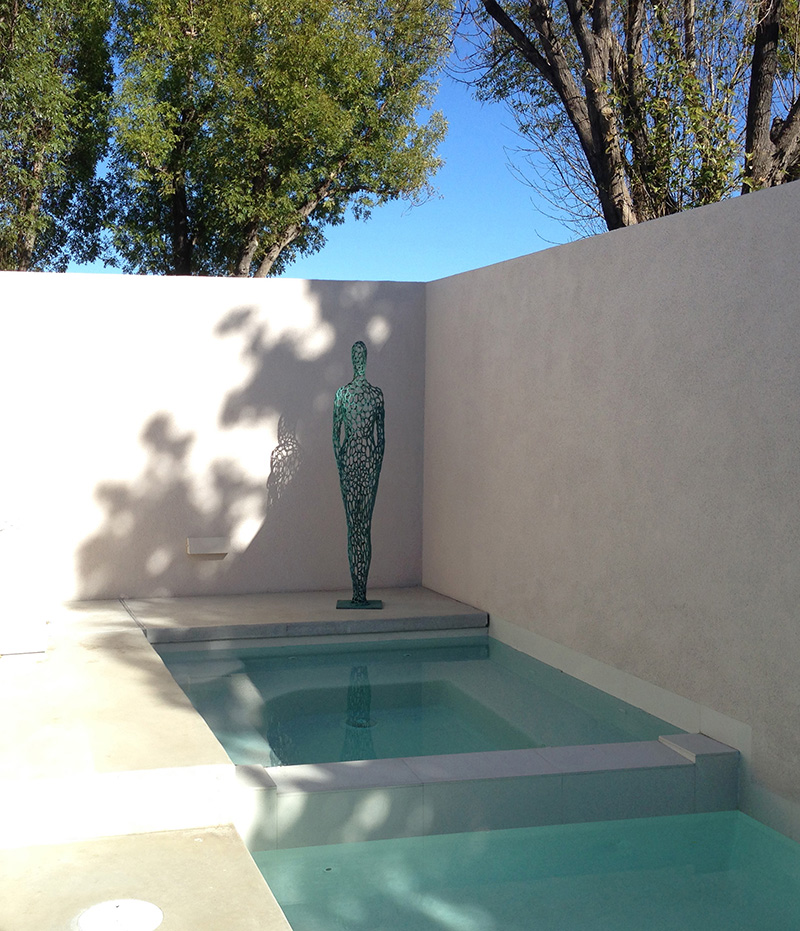
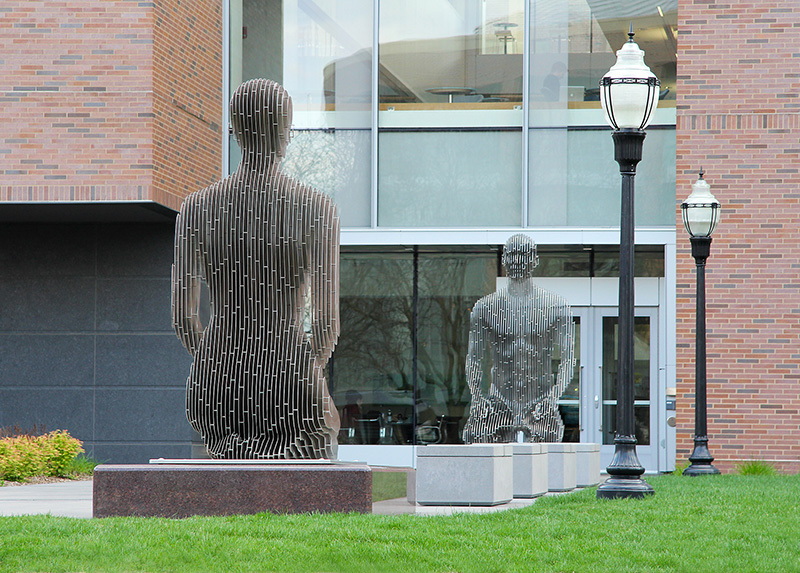
Your work is about perception. If you stand in one area you see a female or male figure but if you move slightly you see right through it almost as if it isn't there.
Is this a comment on the uncertainty of being human or a comment on the fact that at a quantum level we aren't what we seem? Or both?
The idea of the parallel slices with gaps in between them started out in direct analogy to the quantum mechanical matter wave fronts of moving objects. That was all I thought about when I made that first piece in this style in 2006. I did not think about perception and only at the very end, when I completed the work and stepped back to look at it, I was surprised and intrigued by that effect. In successive works I made that effect the center, by making that one special angle, the disappearing angle, the direction of the figure’s gaze. It seemed to fit with that very different feeling you get when you lock eyes with someone. It feels special because it has something to do with our consciousness, our mysterious ability to direct our awareness like a searchlight. Later, I became mostly intrigued by the visual effect of light bouncing off the slices’ cut edges, drawing the sculptural volume into space. There is something about seeing a recognizable and specific body, with a particular face and its own special features that visually conveys aspects of the soul, but not as a solid but as an ephemeral ‘apparition’ – through an obvious and easy-to-understand construction without any gimmicks. In addition to the many potential layers of interpretation this style offers, that is the one that maybe maintains my interest the most: I behold a fellow human by seeing the light bouncing off their material body but I know that this body I see is but one facet of their essence. When I walk around one of those works, condensing that dynamic experience into a mental image, I get that a sense that I perceive something ultimately more akin to an illusion, or what is called Maya in Hindu philosophy, “the powerful force that creates the cosmic illusion that the phenomenal world is real”. It reminds me of a memory of someone, like a dream-like flashback when you suddenly remember the essence of a person; it feels to me like a loved one that is maybe not here anymore.
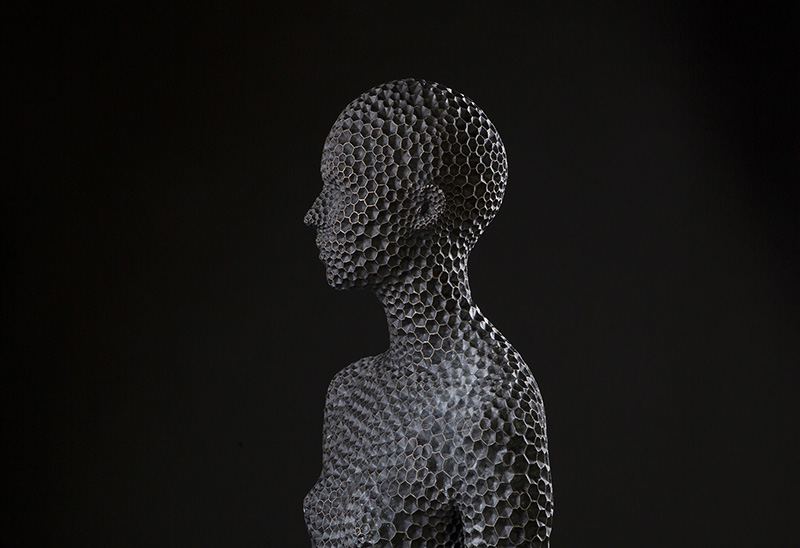
Do you still study physics or is your main focus on being an Artist or are both an Artist and not an Artist at the same time?
I am fully focused on being an artist, which means to me that I give myself license to obsess about anything I want in the name of art – including science. But the nice thing is that I can observe the fruits of science without any pressure of the research environment: I get to have all the fun and none of the stress.
I was, however, also marginally involved in some ‘real science’ while still working as a sculptor. Recently I was working with scientists at CalTech and NYU in a NSF-funded 4-yr collaboration to create nano-scale structures, machines or therapeutics, using DNA as building material, but that has ended now. At this point I don’t do any active science but I am still pretty interested in observing what is happening.
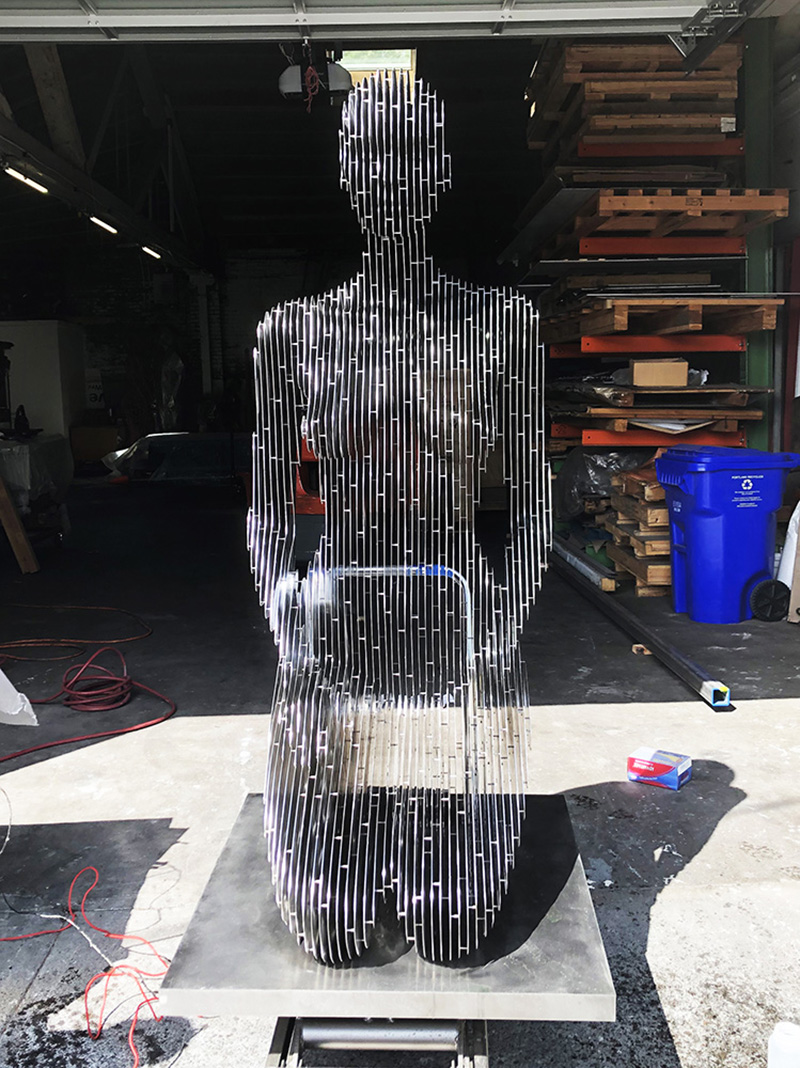
Vienna is known for producing some of the greatest Artists of all time and perhaps the oldest piece of art ever discovered in the West, the "Venus of Willendorf",
which is believed to be around 25,000 years old. What was life like in Vienna? Was it magical? Did you have time to soak in the arts or were you too consumed with your studies?
Isn’t life always magical, no matter if you are in Vienna, Austria or in Vienna, Virginia?
I had a really intense time there for a number of reasons, not least because of the demanding, amazing and fulfilling work in Anton Zeilinger’s laboratory. I put my whole heart into this work. And towards the end of my time in Vienna I also made my very first sculpture at a conference/workshop, but that took place in Cortona, Italy. That 10-day period was clearly the most magical episode for me because it would foreshadow a lot of my future – not only making sculpture, but also including meeting my future wife who attended the workshop with her father (he gave a presentation about quantum physics and parapsychology) – she was actually the reason I moved to the US half a year later. Much to my parents’ chagrin I pretty much ignored the vast cultural treasures Vienna has to offer, including the works by Egon Schiele and Albrecht Dürer on display there, two of my all-time favorite artists. But I was and still am OK with that since I felt I had looked at too much other people’s art anyway for too long when I was younger. The Venus of Willendorf had cast a spell on me since my early youth and I still feel a strong resonance with it, but I never saw the original piece. While my time in Vienna, a separate subsection of Zeilinger’s group actually used an image of this figurine to demonstrate transmission of secret information with quantum cryptography. They had used the image of a fighter jet first but then had the good sense to switch to this world famous cultural icon found close to Vienna for the publication (see https://science.sciencemag.org/content/289/5478/405/tab-figures-data)
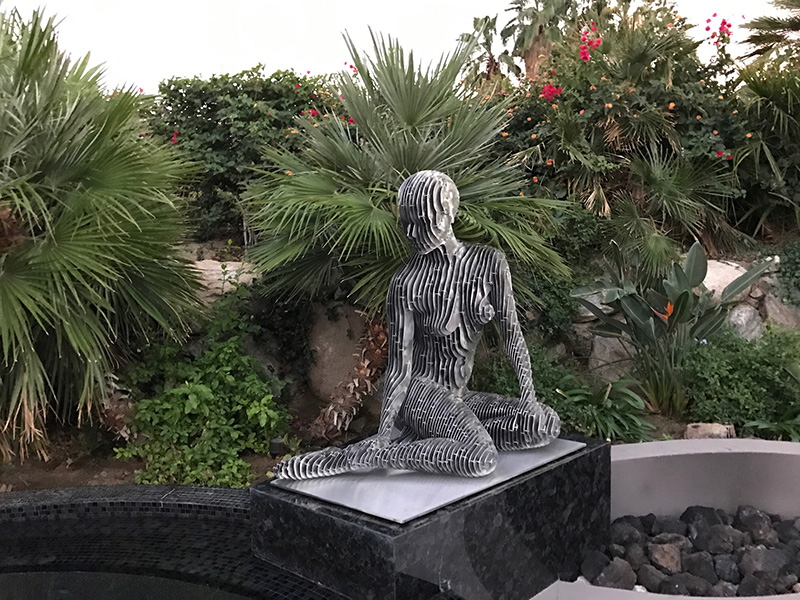
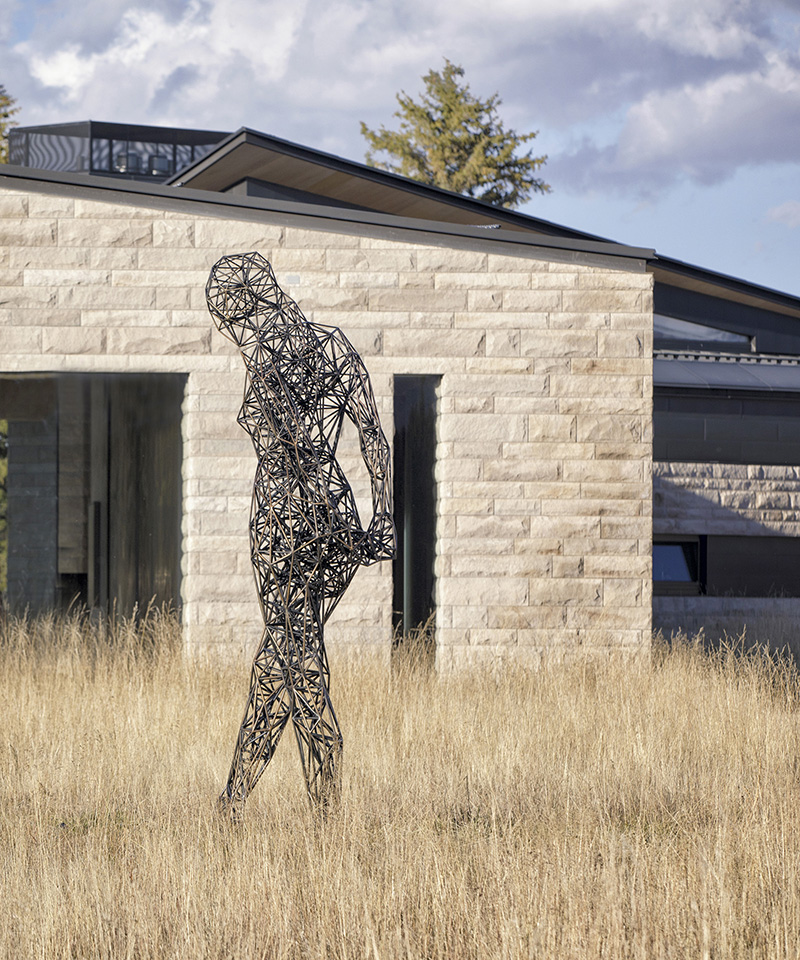
Do you show your work primarily at art fairs, or do you have a gallery that represents you? Any shows or fairs coming up in the future? Or what are you working on currently?
My work is represented by a number of galleries and I have some looser relationships with art consultants and galleries who do not have works on display. Some galleries participate at the art fairs and bring my works which is always a lot of fun and a highlight of the year. I am very much looking forward to going to Art Miami again in early December of 2021 after a Covid imposed one-year-hiatus.
At the same time I have always pursued creating public works, on my own as well as through art consultants and galleries. This has been a blessing since the two different types of work often complement each other. I sometimes turn a public piece into an editioned gallery work or I make a large version based on, or inspired by, a smaller gallery work. That mix of works also helped greatly in smoothing out the oscillations imposed by Covid on the business side of things; in the beginning, demand for gallery works disappeared for a few months, but we stayed very busy with several large public works from before Covid, and then gallery works picked up again while we were waiting to get new public works in, which seems to happen again now.
I am working on a number of works for Art Miami I am excited about, so stay tuned!
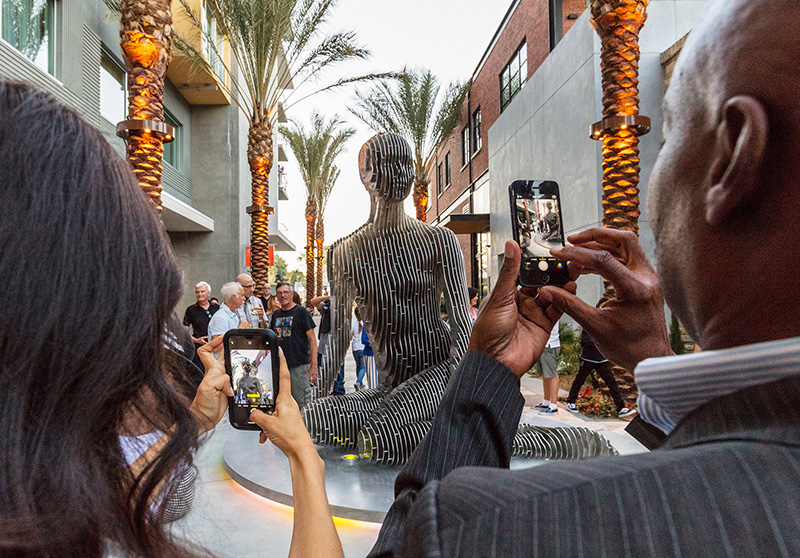
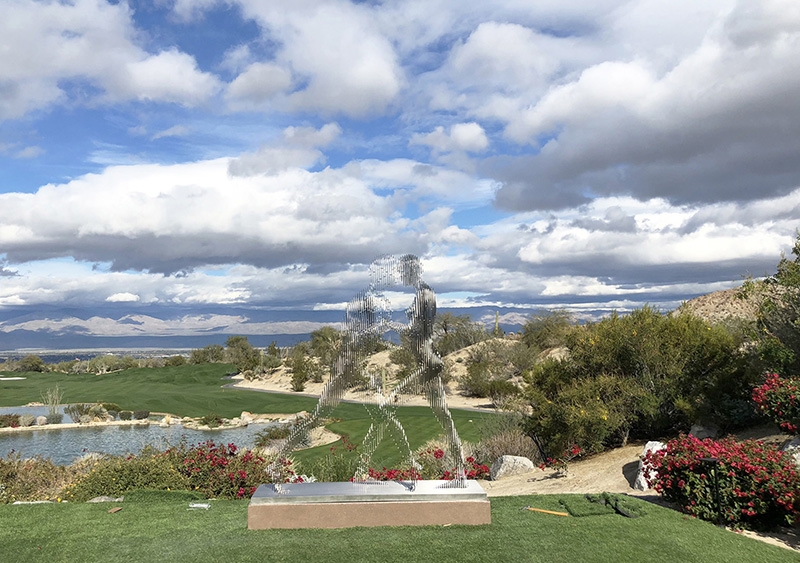
Do you think Scientists will ever discover Room-temperature superconductors? If so, how will that upend our lives?
Oh yes, they just have – see https://www.nature.com/articles/d41586-020-02895-0
They do need a ridiculous amount of pressure though at this point, so let’s see just how much of an impact that particular material is going to have. But the promise of creating materials that bring pure, macroscopic quantum properties into our world (in terms of size, temperature, pressure, etc) has enormous potential to keep us on our current path of exponential growth (of at least some aspects of humankind’s abilities). Will it upend our lives? Have the already developed technologies upended our lives? I definitely think so but it appears to us as happening in slow motion so it doesn’t feel like it. I feel mankind is close to some sort of ‘singularity’ with profound impact on all our lives, of unprecedented magnitude.
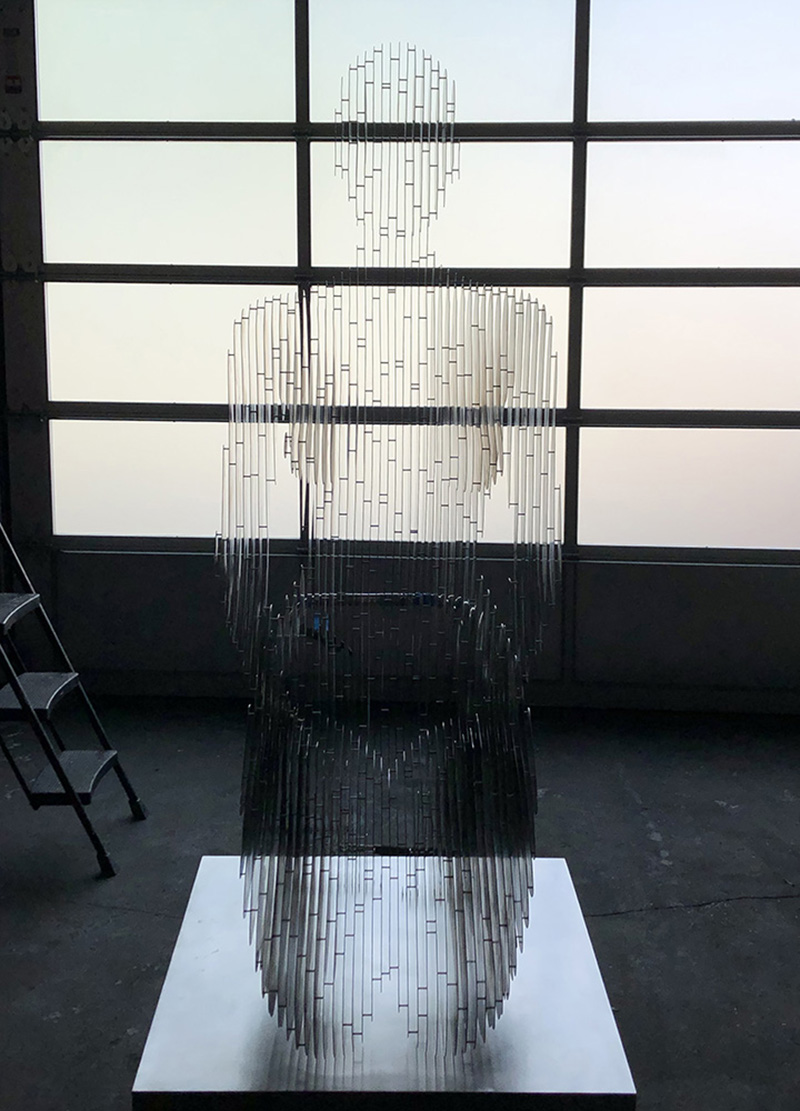
Any other interest in expanding your Art into music, film, literature or other mediums? Painting? Or do you already dabble in other arts?
I have an old love for 2-D art, things like drawing, painting, and printmaking, and I do play with ideas involving 2-D art quite a bit. I recently made three wall works based on the segmented sculpture ideas which was fun and resulted in some very interesting works. I will pursue that. As to the other arts, I do not know yet. Sculpture came really unexpected into my life at age 29 and I am open to this happening again with something else.

Which Artists do you admire the most that perhaps we have never heard of? Who is doing interesting work that makes you a bit jealous?
The artists I admire tend to be pretty well known. Obvious candidates are Picasso and van Gogh, and people like Schiele and Dürer, I mentioned above. “Der Blaue Reiter”, “Die Brücke”, Futurism – all that art at the turn of the century when quantum physics, relativity and abstraction emerged, is incredibly intriguing for me. There are really quite a few 2-D artist of old that I admire greatly. In sculpture, the 19th and 20th century works tend to not resonate as much with me. I like the newer ones that re-discovered the human figure after Modernism, also because it feels akin to what I am pursuing, people such as Antony Gormley or Jaume Plensa. And I of course love some of the timeless and ancient works, like the Venus of Willendorf or Nefertiti.
I feel incredibly blessed that I am not very prone to jealousy. Whenever I notice this emotion, I make a conscious effort to neutralize it because I feel jealousy, like fear, is pretty useless as a motivator and in general a very destructive force.
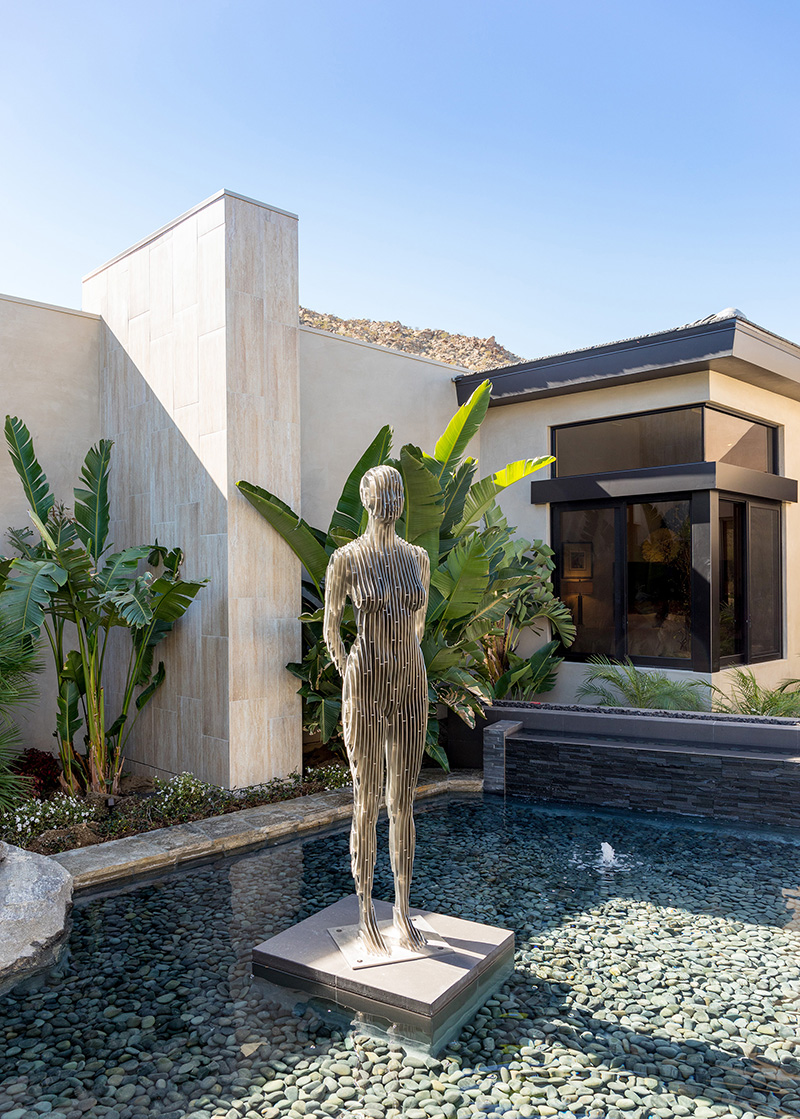

|
|

